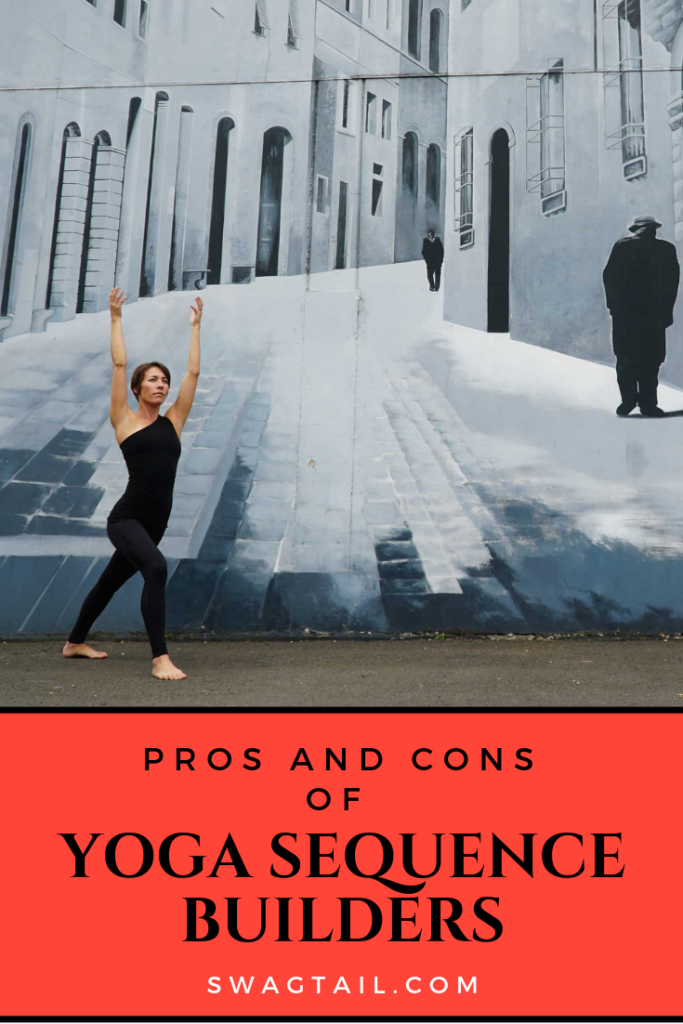 Learning to sequence yoga classes safely and purposefully can require valued time when you are just starting out as a teacher. Yoga sequence builders have been designed to save you time and energy in this process. But are they really providing the value you’re looking for? This post reveals some of the pros and cons of these online programs. Then you can decide if they’re a good fit for you.
Learning to sequence yoga classes safely and purposefully can require valued time when you are just starting out as a teacher. Yoga sequence builders have been designed to save you time and energy in this process. But are they really providing the value you’re looking for? This post reveals some of the pros and cons of these online programs. Then you can decide if they’re a good fit for you.
What can be tricky about yoga sequencing, especially in vinyasa style practices, is that the creative possibilities are endless. On my most recent road trip, I attended back-to-back level 2 vinyasa classes at different studios. They couldn’t have been more different! One was heated and extremely intense from the beginning posture. The second was slow. It included a dharma talk for the first 15 minutes of class and very few linked postures. In hindsight, it probably should have been scheduled as a Hatha class. Matching the actual class taught with the advertised class online is a great way to build trust with students.
But I digress. The point is that while there is amazing latitude for class sequencing, there are main elements like safety, efficiency, and proper anatomical focus that are essential to creating a great class.
So, whether or not you decide to use a yoga sequencing app to prepare your classes, keep the big picture in mind. Honor your teaching level and your students. And remain confident in your abilities. For these attributes play an equally important role as you attract students and clients to your business.
THE METHODOLOGY
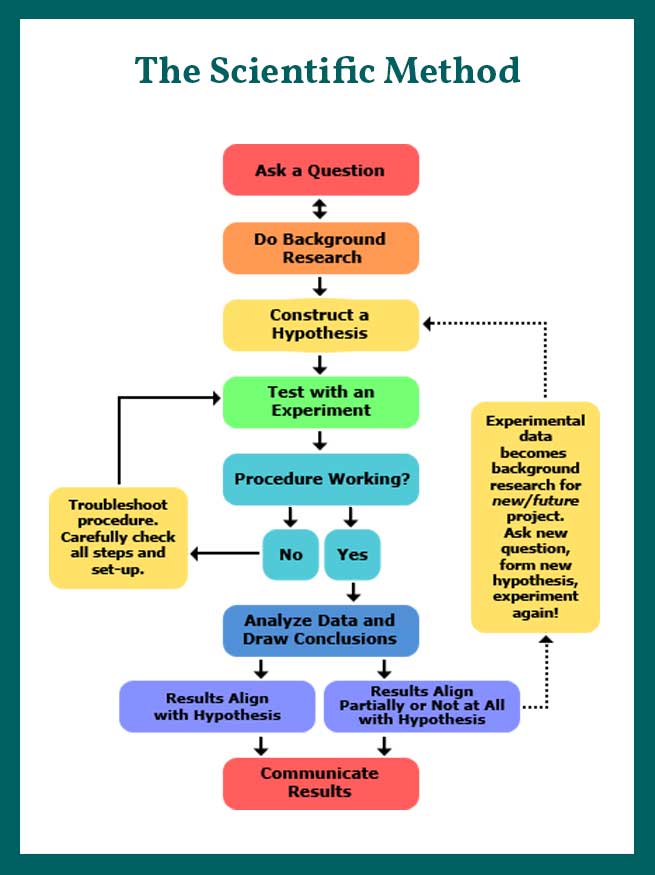 The scientific method starts with asking a question. In this case, the basic question is “do online yoga apps save you time and energy?” Next, comes the research to see what’s available on the market today. In fact, there are quite a few options out there. These include, but are not limited to:
The scientific method starts with asking a question. In this case, the basic question is “do online yoga apps save you time and energy?” Next, comes the research to see what’s available on the market today. In fact, there are quite a few options out there. These include, but are not limited to:
With a hypothesis that these yoga sequence builders will be beneficial to a yoga business, we signed up for a free trial on each and explored the product. Like all things in life, each had their strengths and weaknesses. Check out the pros and cons below based on our following considerations:
Photo Credit: Science Buddies
YOGA POSE VARIETY
PROS:
Many of the yoga sequence builders had an extensive supply of visual pictures to choose from. Tummee, for example, has well over 2,100 poses in their library. While they use drawings of individuals, Yogidia and Gaiam yoga studio have full-color photos of humans in proper alignment.
When you have access to this many yoga poses, you can get lots of new ideas for peak poses in your classes. You’ll also find new ways to warm up the body and restore it after the challenging portion of the sequence.
CONS:
When you have so many options to choose from, you can easily become overwhelmed. Each sequence builder also has unique ways in which they categorize the poses. When you type in a specific pose on a search finder, you may or may not come up with the pose you are looking for. Once you complete a sequence, there’s also no feedback on whether the poses you selected flow well together. This could leave your sequence missing vital components.
PRINT YOGA SEQUENCES IN PICTURE FORM
PROS:
When you are teaching a class, there are natural pauses when you can look at your notes to see where you want to guide your students next. You can find your place easily in your sequence when you look down at photos instead of just words.
Many of the yoga sequence builders allow you to print your sequence in picture form. This can be really helpful if only on one or two pages. You can then write in any additional notes next to the images that you want to recall while in class easily.
Here at Swagtail, we use stick figures along with simple phrases and cues for the breath to stay on track in class.
CONS:
While pictures can be really helpful, the visual learning sense is only one of the main ways in which you learn. Whether you use images or words to build a yoga sequence, it’s essential you bring in your auditory and kinesthetic senses as well.
What does this mean? Kinesthetic refers to tactile learning. Take the time to practice a sequence you’ve built (whether you’re using a yoga sequence builder or not). Use your body to feel the postures. Observe how these poses flow (or fail to flow) well together. Then, internalize the balance (or imbalance) after completing the practice.
Auditory learning refers to listening. Speak the verbal cues aloud when you practice on your own. This will also help you discover whether the sequence you put together is efficient and fluid.
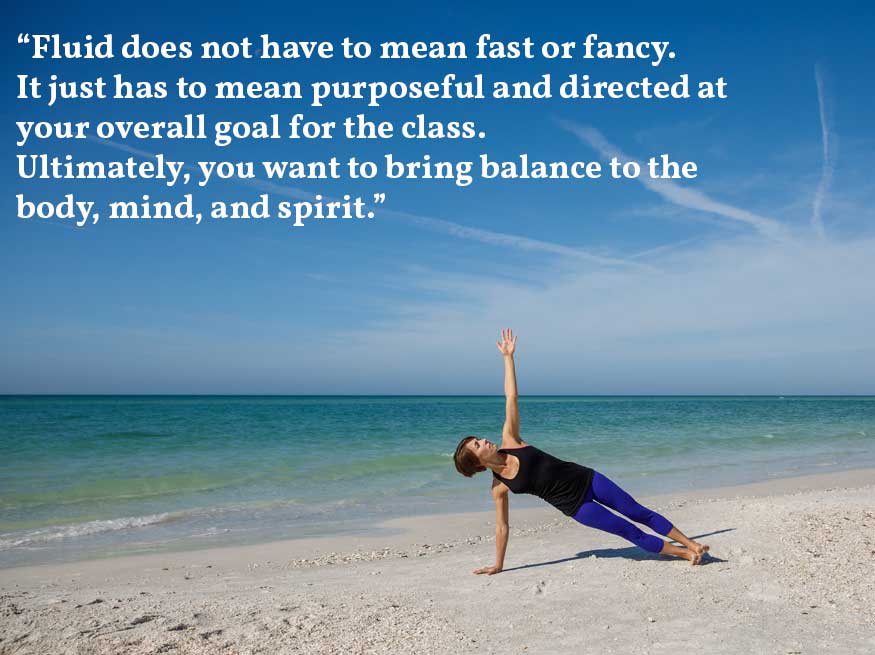
Photo Credit: Casey Brooke Photography
ACCESS TO CLASS SEQUENCES
PROS:
In most of the yoga sequence builders, you can create your own classes and then save them for a later date. This can save you time. You’ll also have access to sequences created by other teachers. Observing how others piece poses together or work towards a peak pose can give you ideas in your own classes. And printing these already-constructed sequences can also save you time.
CONS:
While it might seem like a perk to have access to hundreds, if not thousands, of yoga sequences online, most of the online apps do not approve which sequences get uploaded. Said another way, many sequences that are available are not safe, efficient, or well-rounded. So, why would you want to replicate sequences that are poorly crafted?
If you’re a new teacher thinking you’ll not only save time, but learn in the process, you’ll be led by the blind much of the time. This inevitably takes more time to unlearn bad habits or techniques, and implement sequences that will suitably fit–and satisfy–your students.
ADDITIONAL FEATURES
 PROS:
PROS:
While you might venture to a yoga sequence builder to help craft your classes, each platform offers unique additional features that can enhance your teaching skills. For example:
- Tummee has a Sanskrit section where you can actually hear how yoga postures are properly pronounced.
- Yogidia has additional videos to learn about poses.
- SequenceWiz has lots of articles on sequencing concepts, as well as an anatomy model to help you select poses that target areas of the body.
- Yoga Class Plan, like many of the others, provides tutorial videos and great customer support. They also offer numerous articles on yoga teaching in general.
- Gaiam Yoga Studio provides classes and sequences from world-renowned yogis such as Rodney Yee. Always a perk to learn from the best.
- WorkoutLabs includes images that also fall under the fitness and personal training range, so you might have more strength-based ideas when working with private clients.
CONS:
Just like with learning anything new, you have to schedule in the time to practice. This is the same with these additional features. If you want to take advantage of them, be sure that you create the space and structure in which to learn. Otherwise, these additional tools are of little value.
Photo Credit: Diane Nicole Photography
TIME AND MONEY
PROS:
Each of the yoga sequence builders is reasonably priced. You can have access to these programs from between $6 – $15 per month. And, given you invest the time to learn any program, you could save time and energy down the road once you understand the system.
CONS:
It can take almost an hour to build a sequence on these platforms when starting out. Your time might be better spent taking a yoga class, getting in your body, experiencing how a sequence flows firsthand. Then, you could copy that exact class and teach it yourself. You would have then heard, seen, and felt a yoga sequence more intimately than any yoga sequence builder could provide.
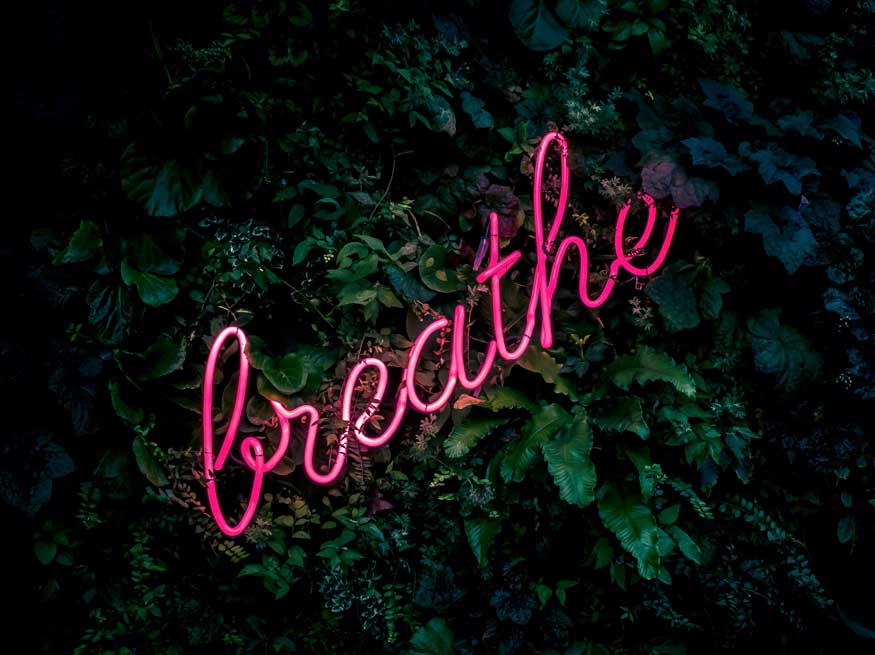
Photo Credit: Fabian Moller
THE IMPORTANT CONCLUSION
After analyzing the data, a final conclusion is drawn. While yoga sequence builders might have lots of great perks, we find that they might not be worth the time and energy investment. Here’s why:
Creating yoga sequences is a lot like creating flashcards when studying for an exam. While you can buy a set of flashcards to save you time, the main benefit of flashcards comes in the preparation to make such cards in the first place. When you put concepts from your mind into your own handwriting, then review them over and over again, the material gets more deeply ingrained in your mind.
Yoga sequence builders can be a lot like taking the shortcut route–or purchasing the flashcards. You might still get some benefit from them (like if you stumble upon a great sequence or get picture ideas of new poses), but it can take longer to actually internalize the concepts. Thus we suggest the following alternate solutions to creating amazing yoga classes:
ALTERNATIVE SOLUTIONS:
- Practice Often. Take lots of yoga classes in lots of different styles. Getting on your mat is one of the best ways to experience what works and what doesn’t in a class.
- Collaborate with a teacher. Ask a teacher you know and respect to share some of their sequences with you. Most will be happy to help you out.
- Take Notes. Instead of scheduling your next get-together right after class, book in 30 minutes to yourself so you can take sequencing notes. Write down flows that you liked.
- Ask a mentor for support. Run your own sequences by a mentor, and have them give you feedback on your yoga sequences. This could be the best solution of all, as you will have seasoned eyes on the classes you’re going to teach.
- Save your files. When you find class sequences you like, put your notes in a folder. You can also keep all of your own sequences there, too, in case you want to repeat ones that worked well with your students.
PUTTING IT TOGETHER
When you craft unique yoga sequences as a yoga teacher, you take your students on a more personal journey that results in more balance, alignment, and inner freedom. The time you invest in creating these sequences is valuable. While yoga sequence builders might claim to save you time and energy, nothing can replace the amount of work you put in at the beginning of being a teacher to learn the sequencing process. It helps build a foundation for your future, solid understanding of the body and how poses flow together with more efficiency and ease for your students.


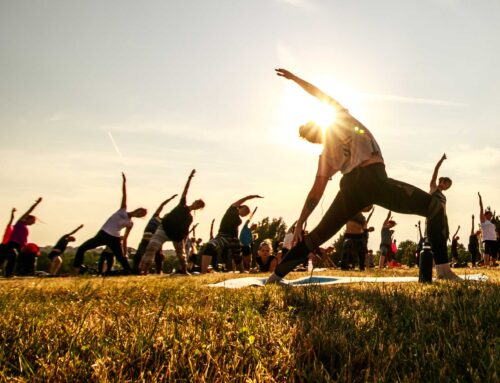



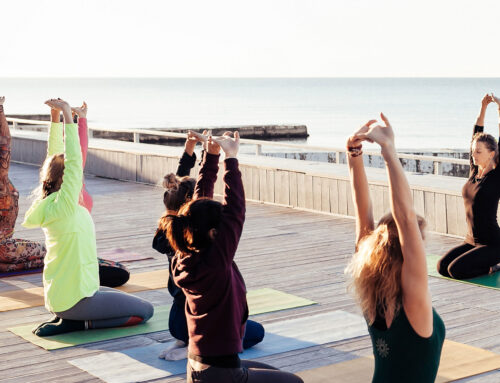

Great info! Thanks Kym!
Sorry that I am just now seeing this, Amy! Glad you liked this post and I’d love to write about more topics that interest you. Just let me know!